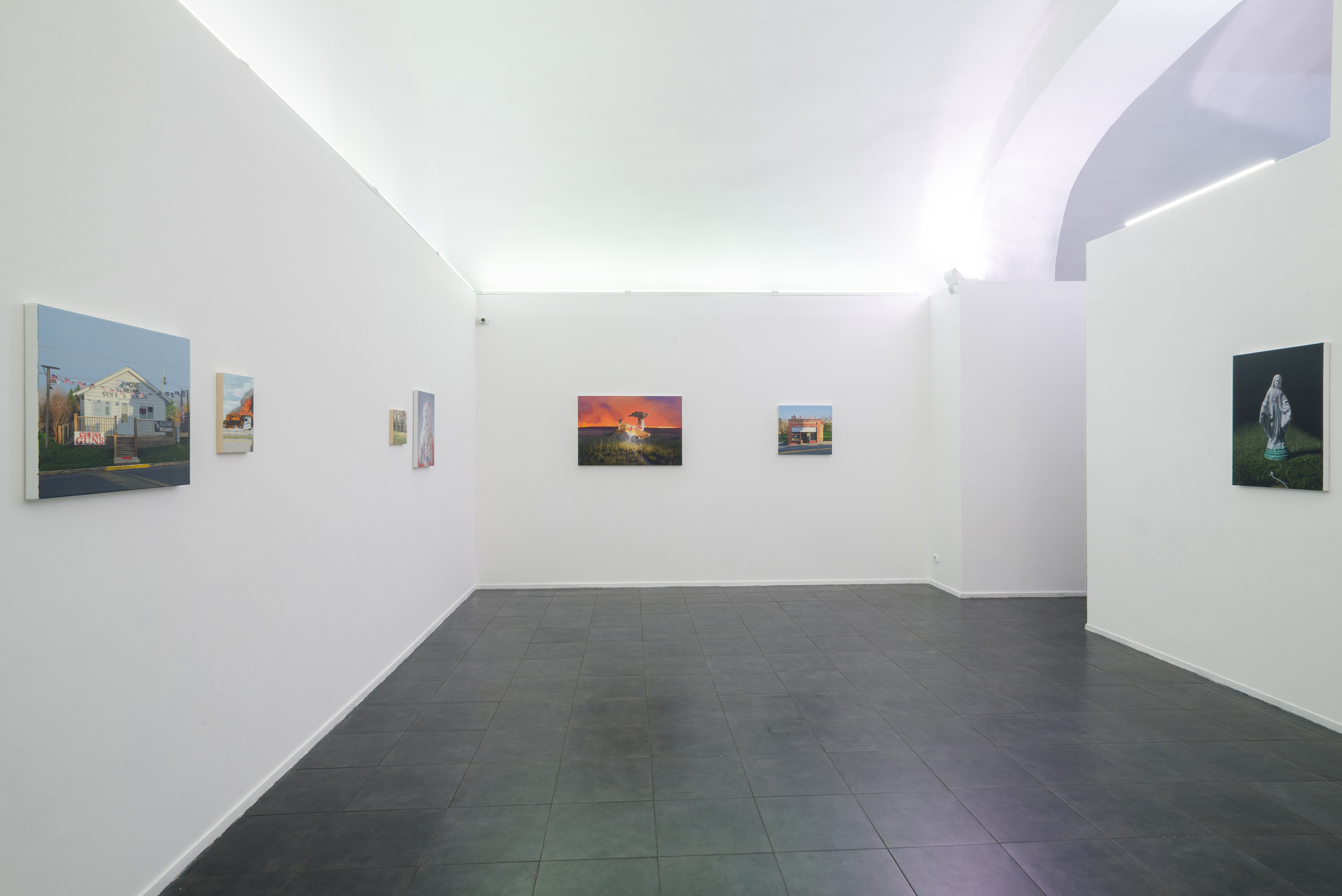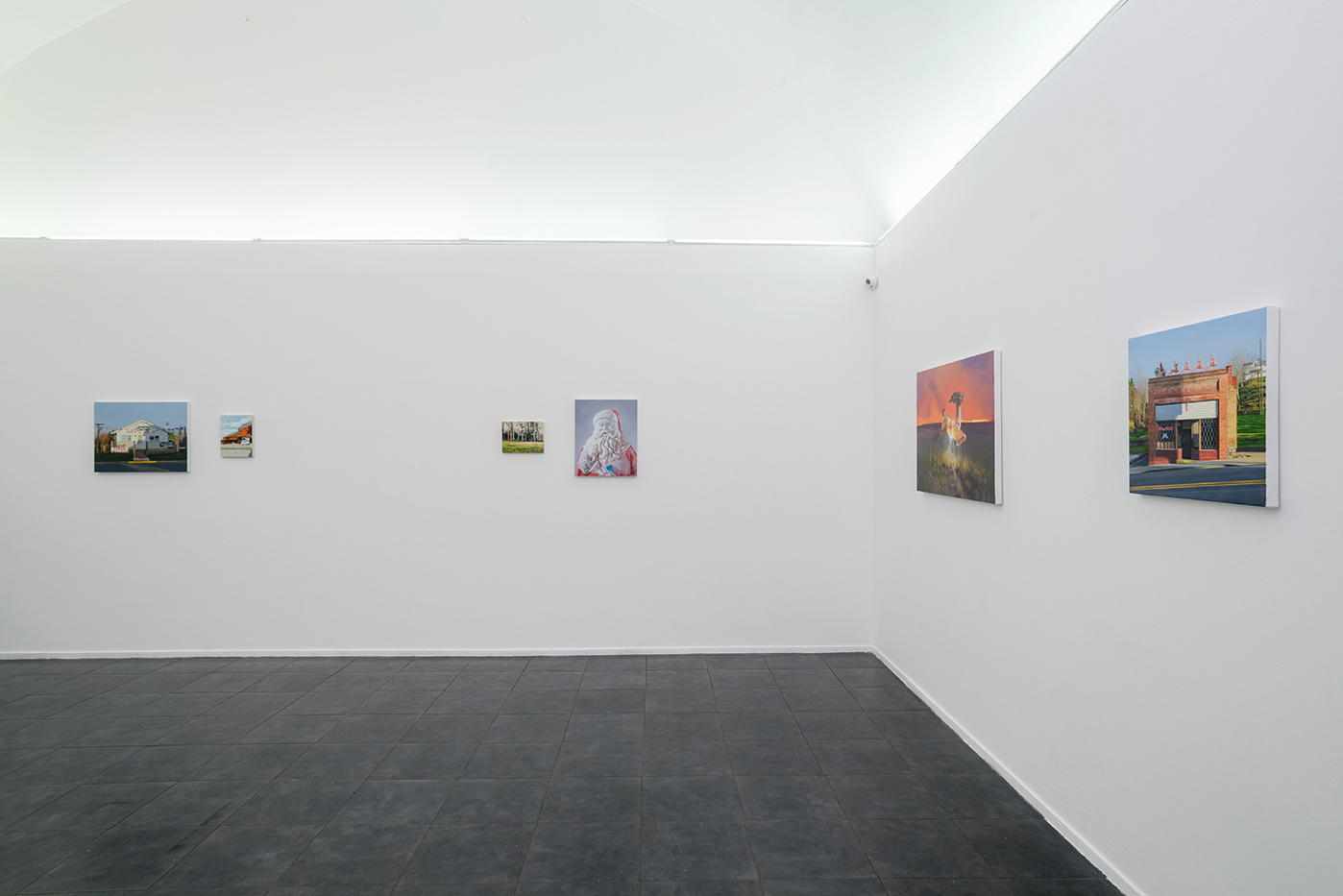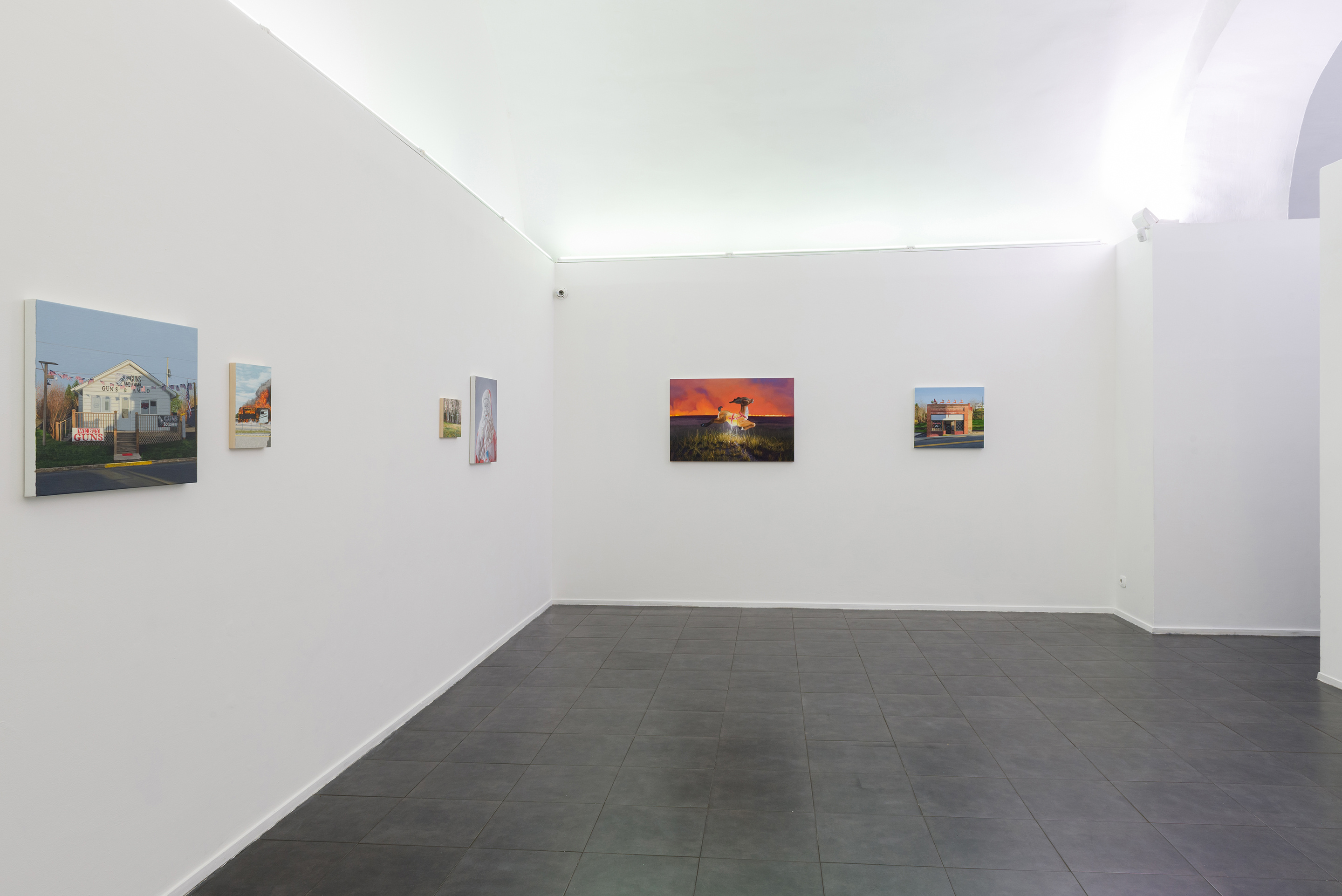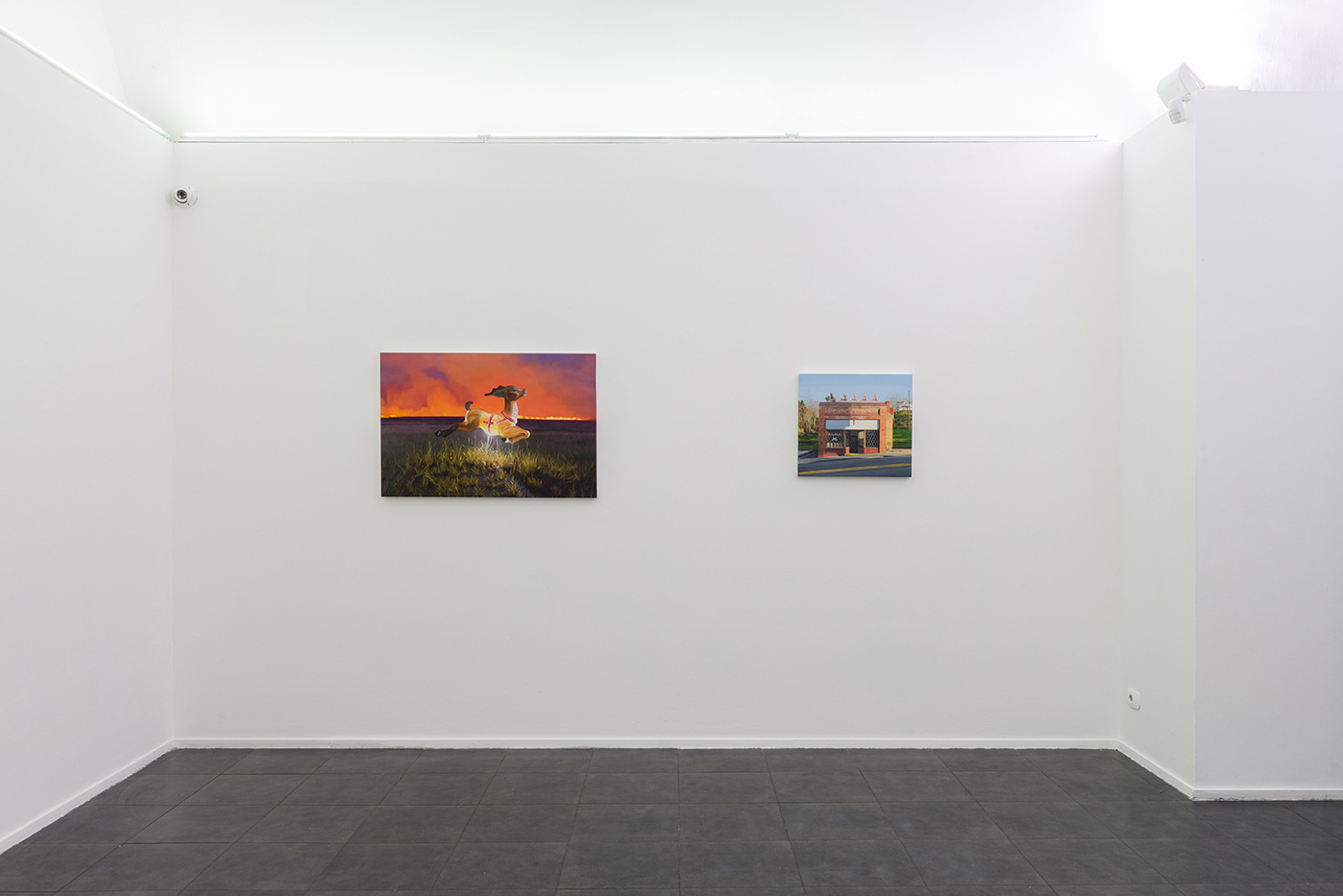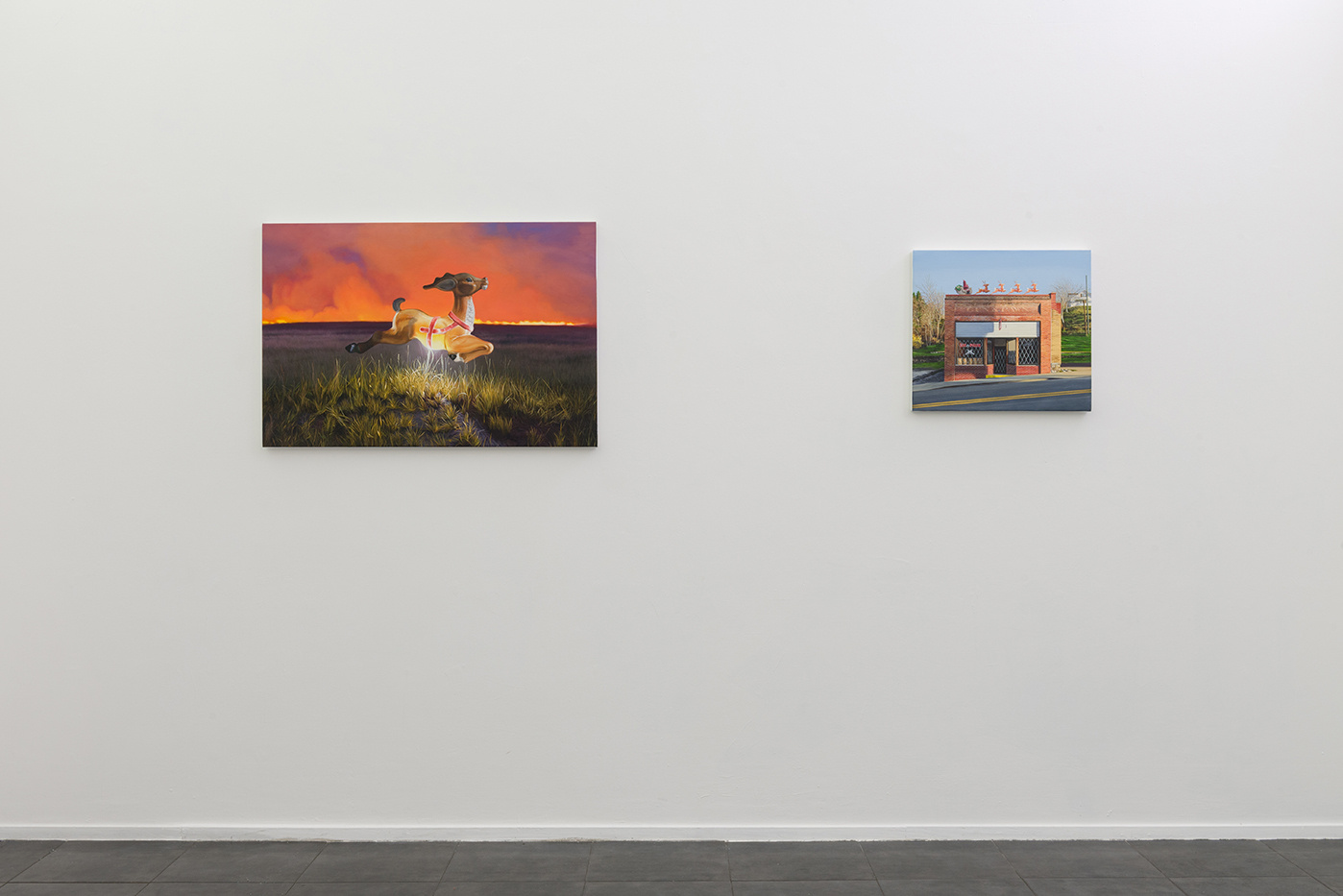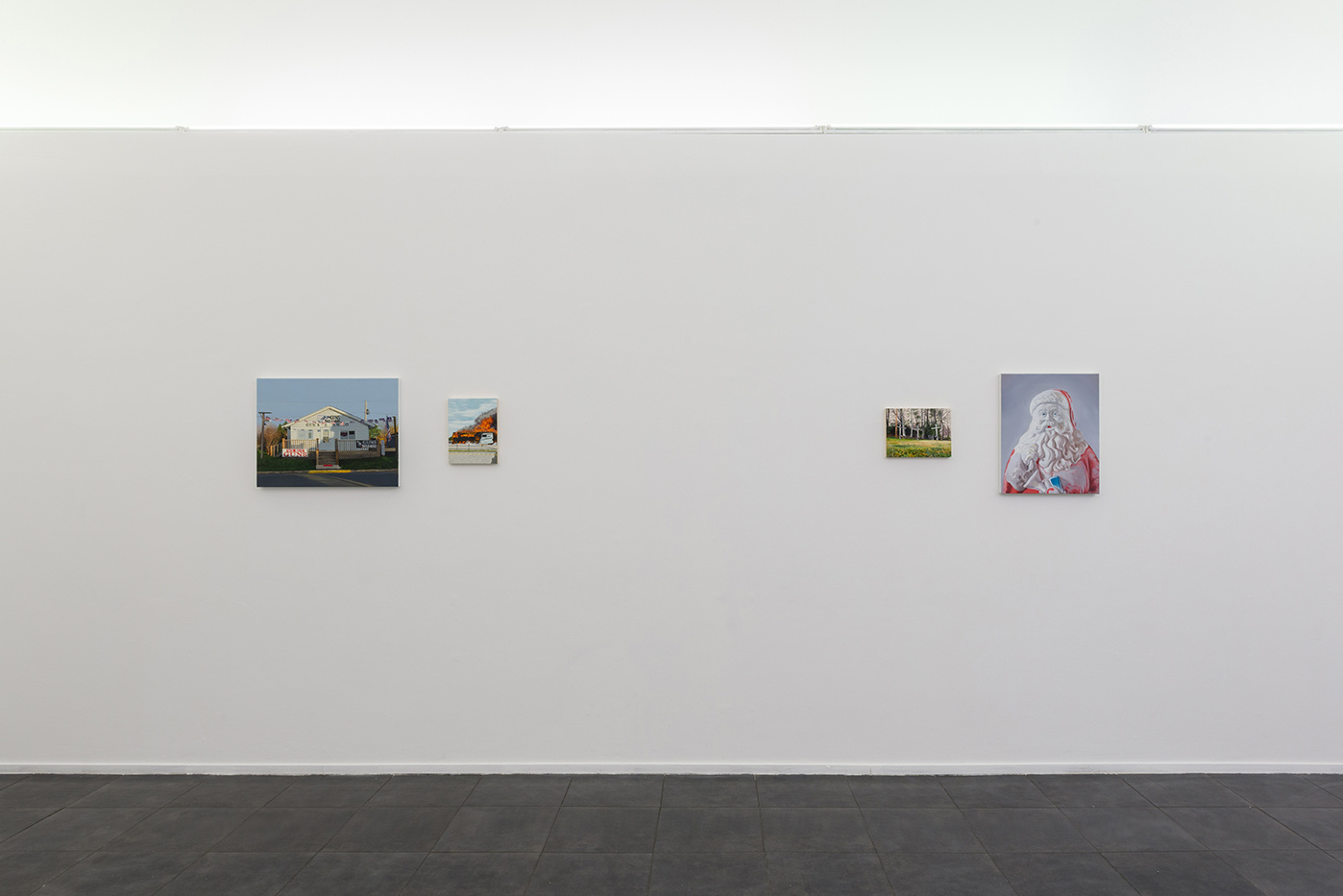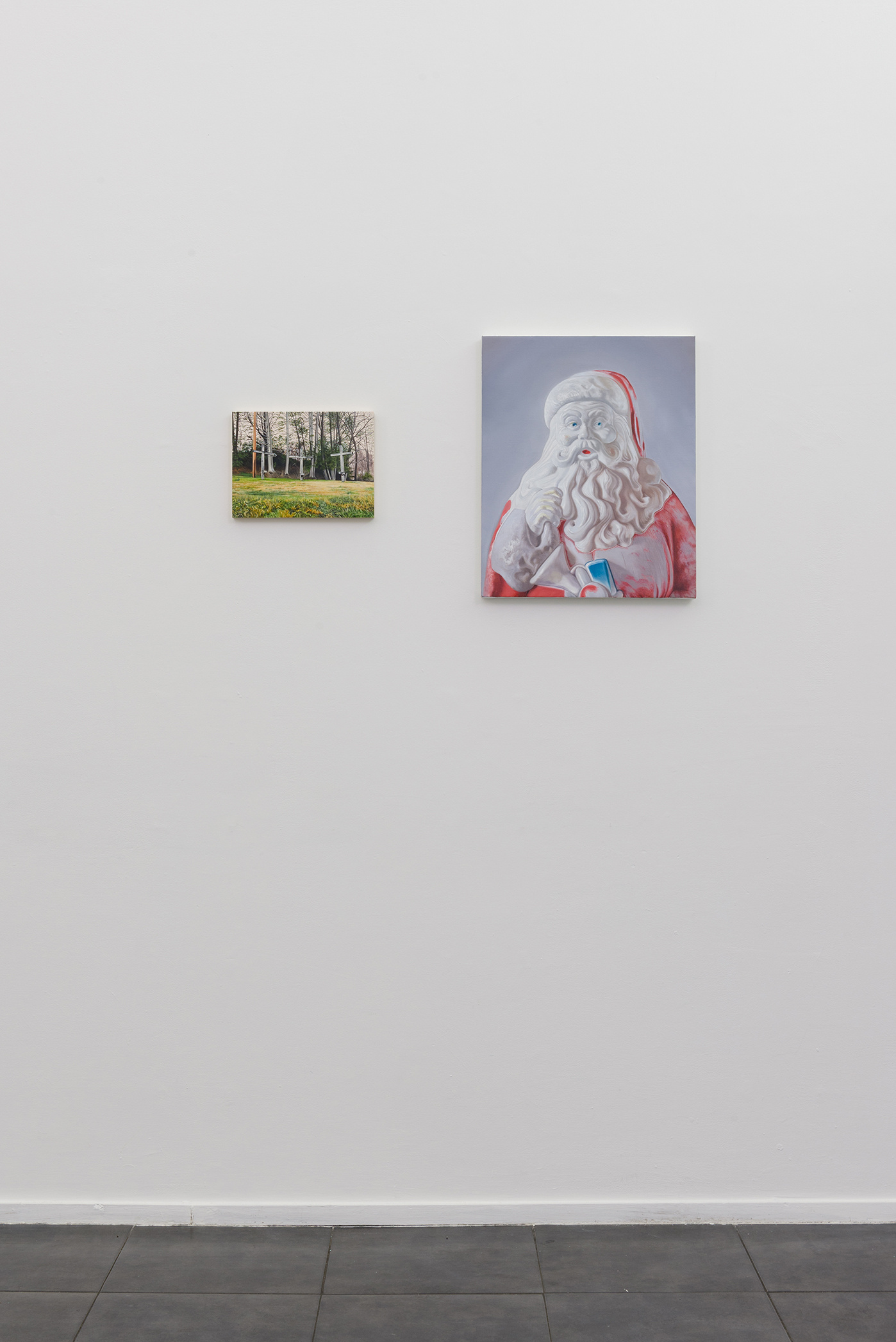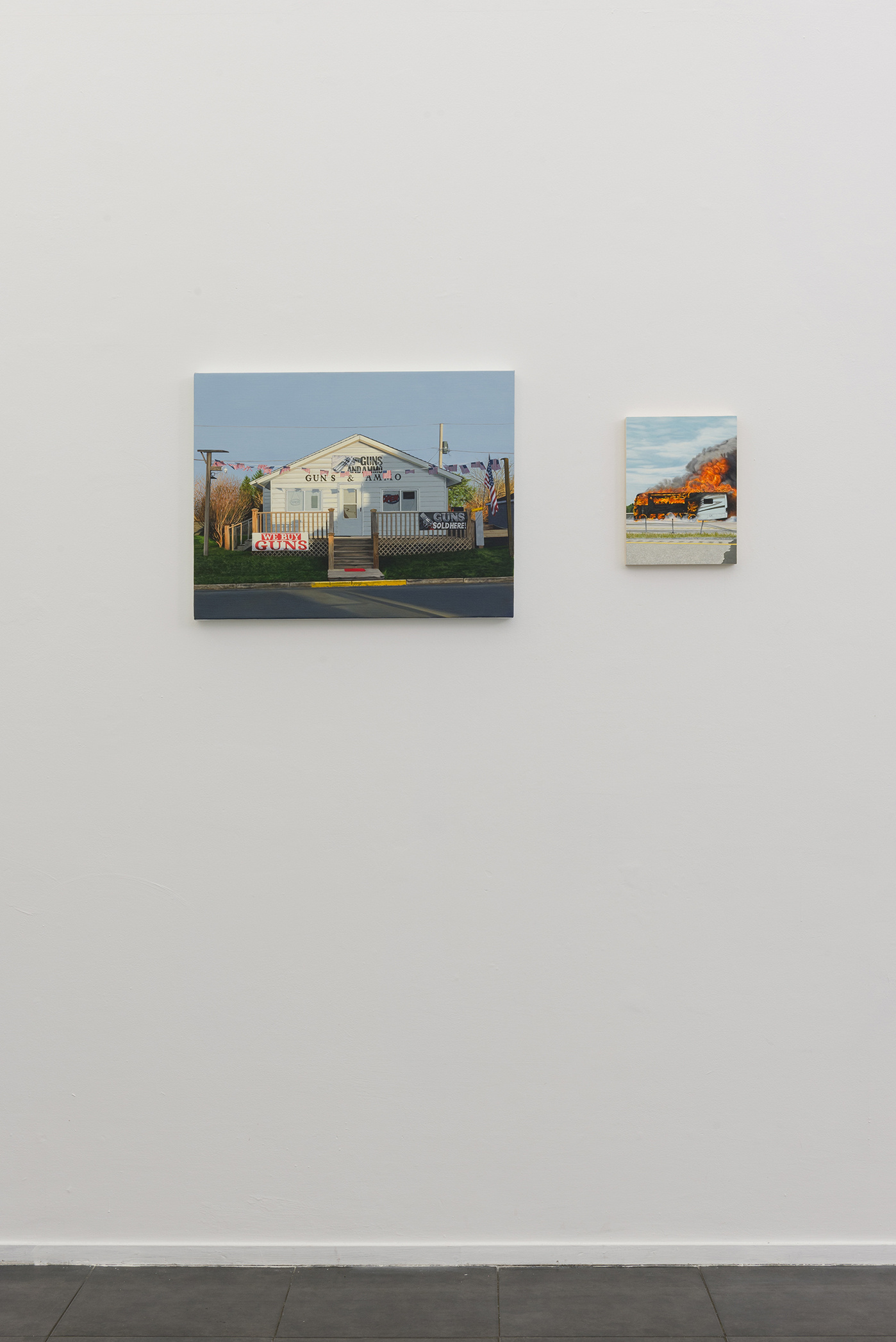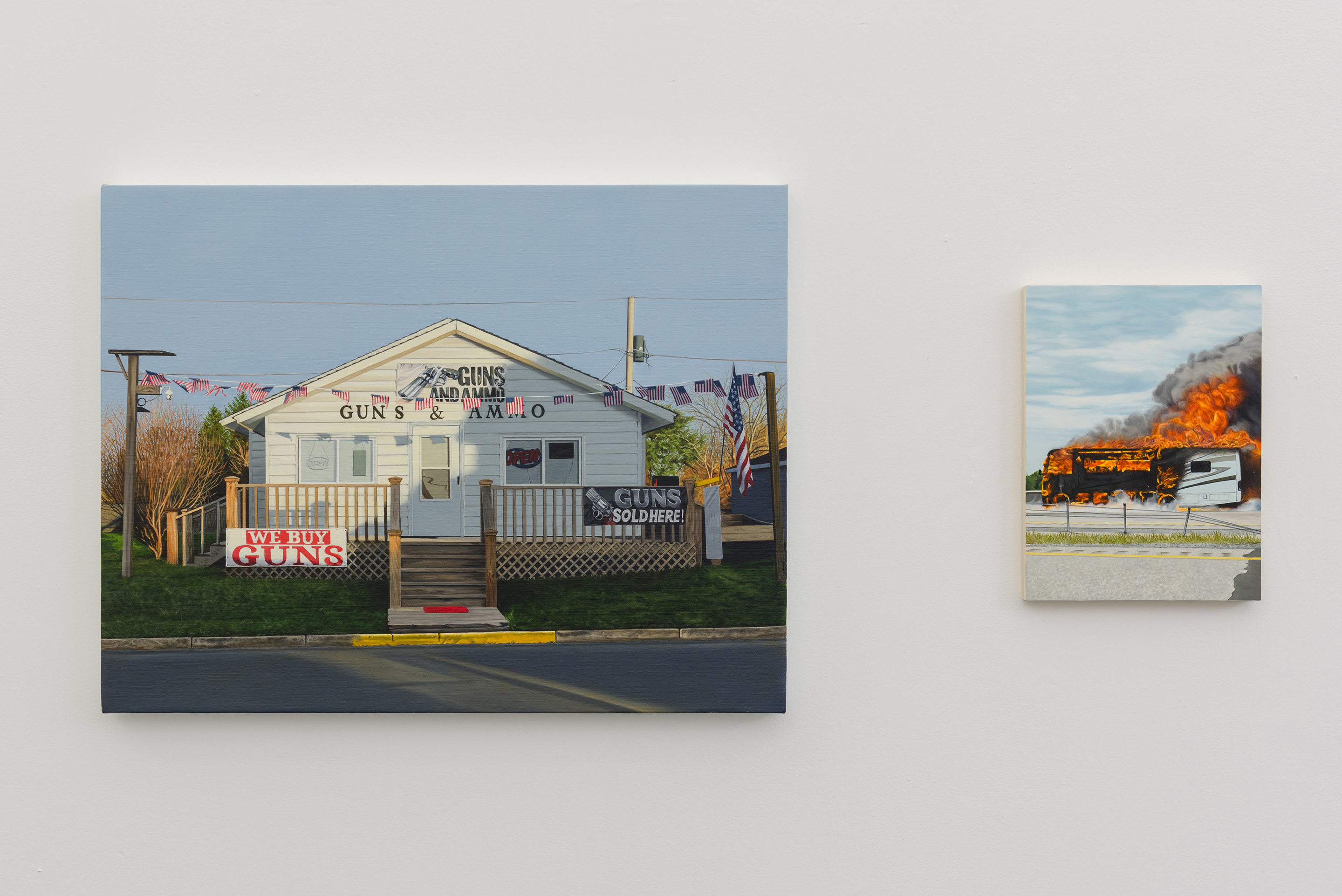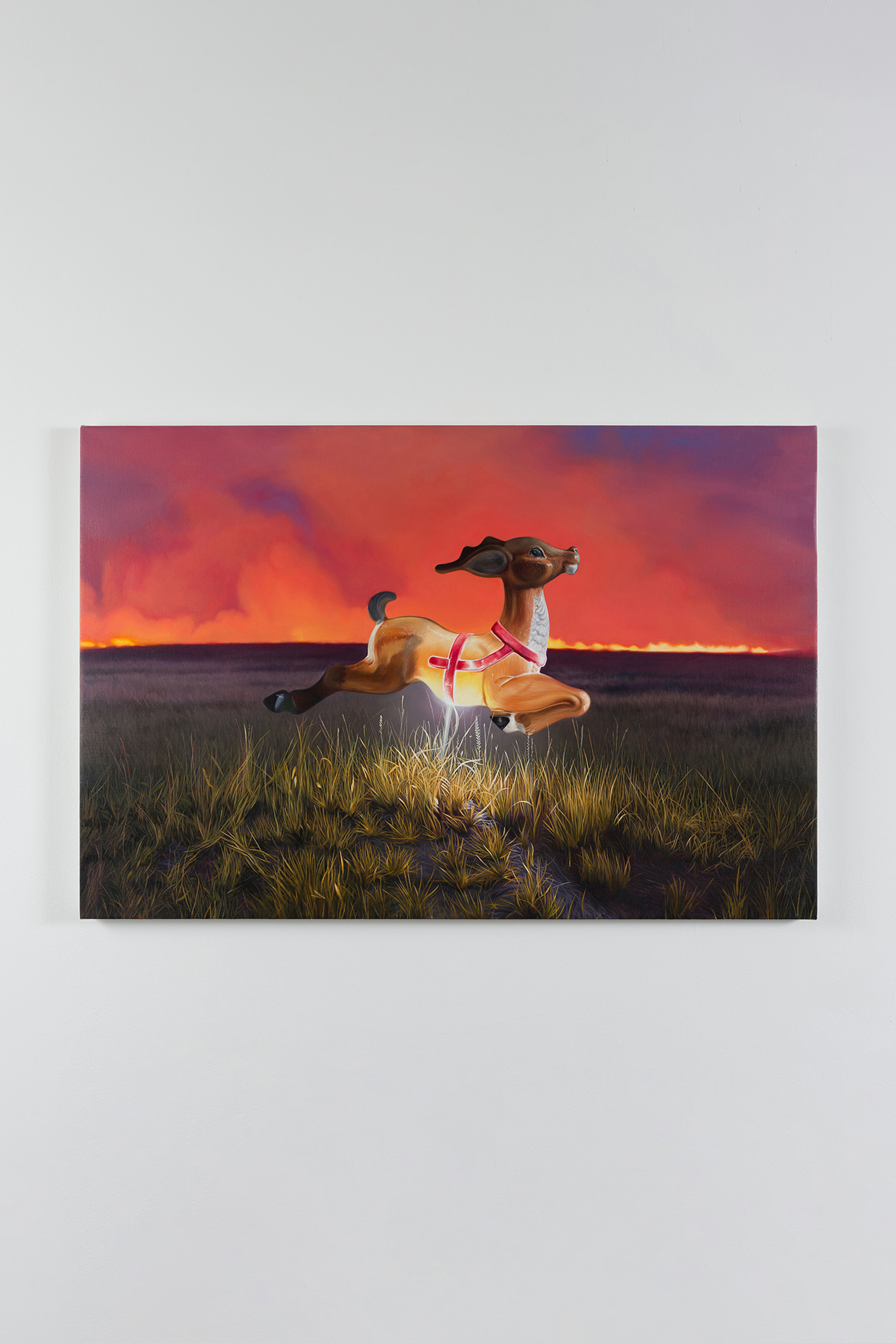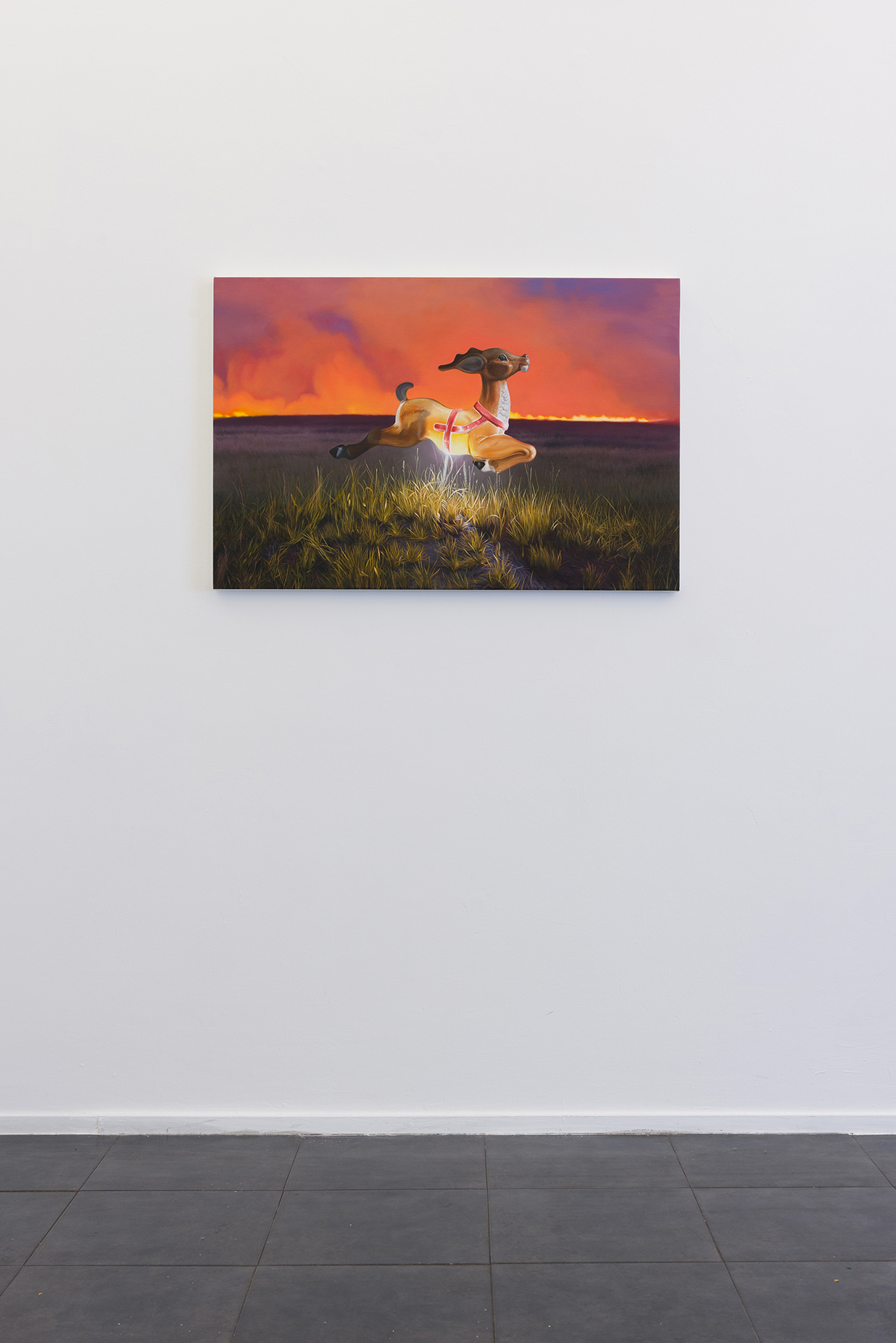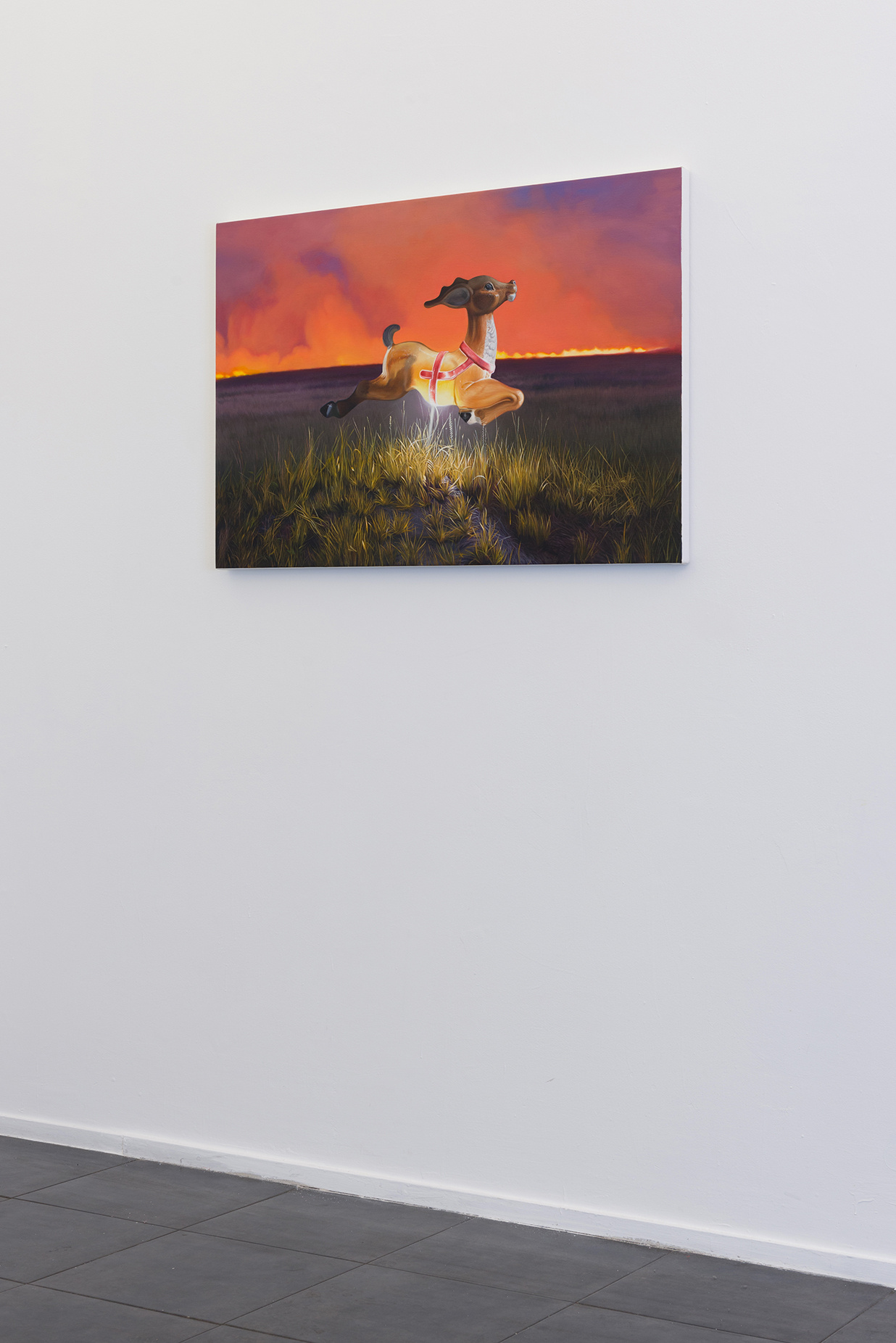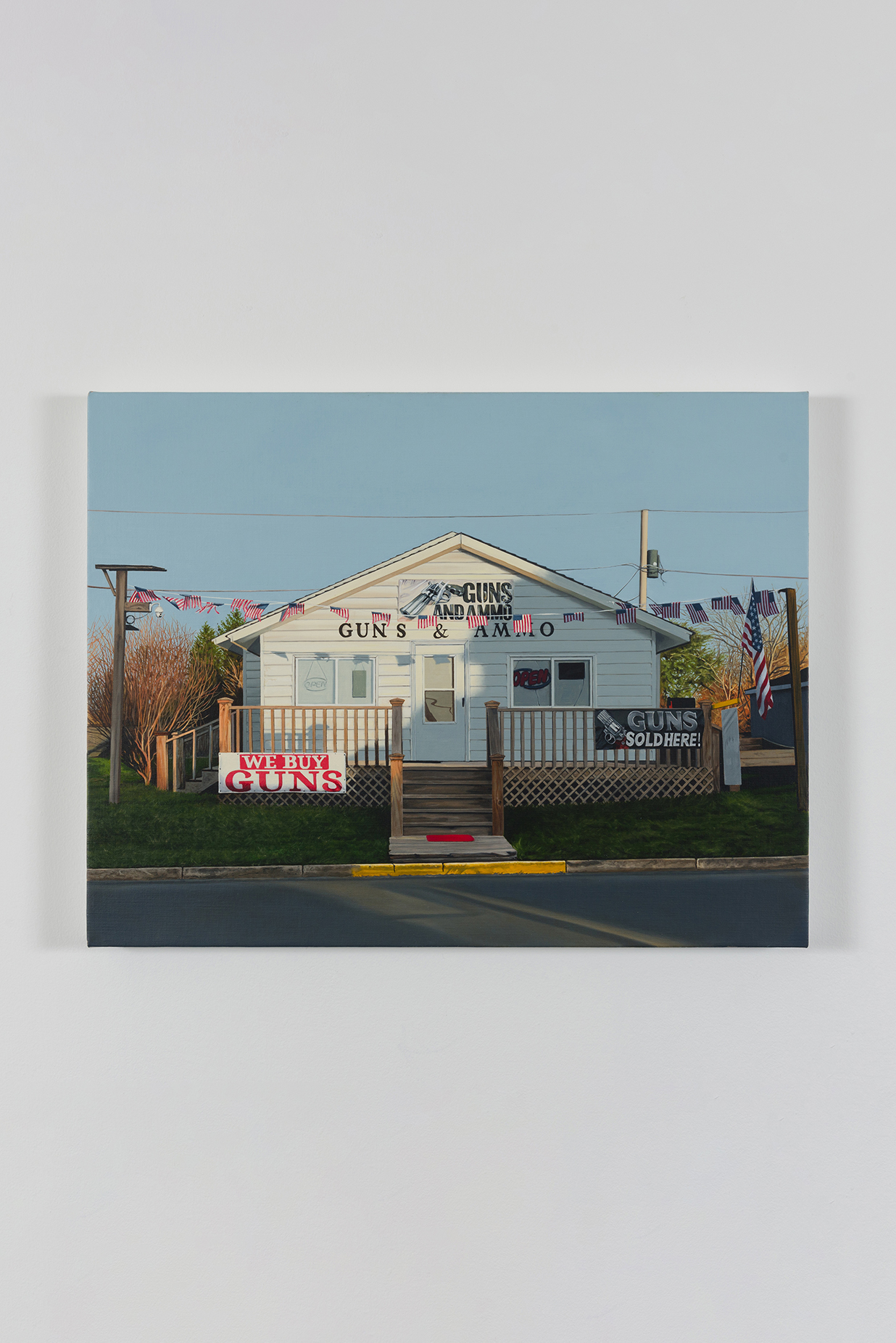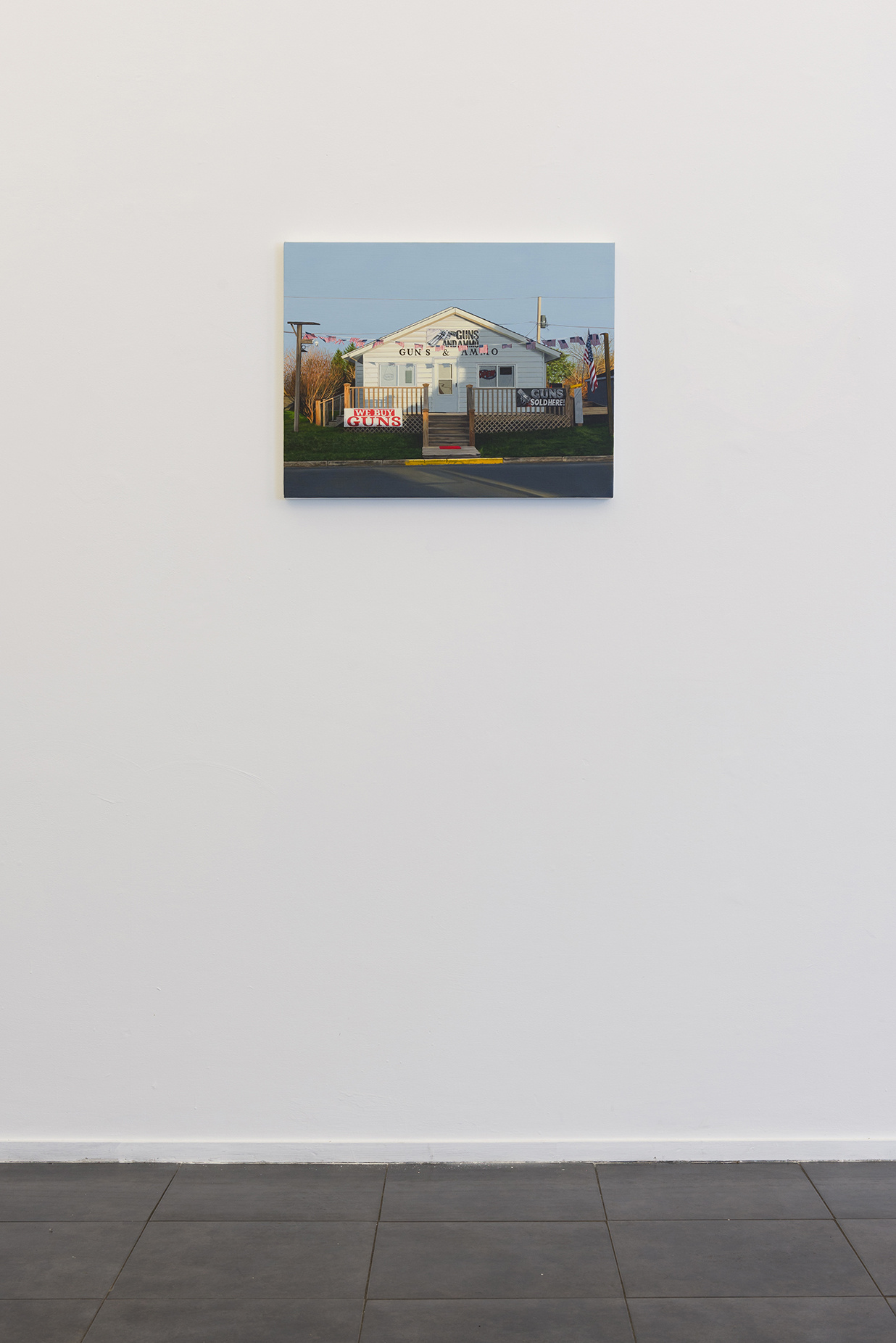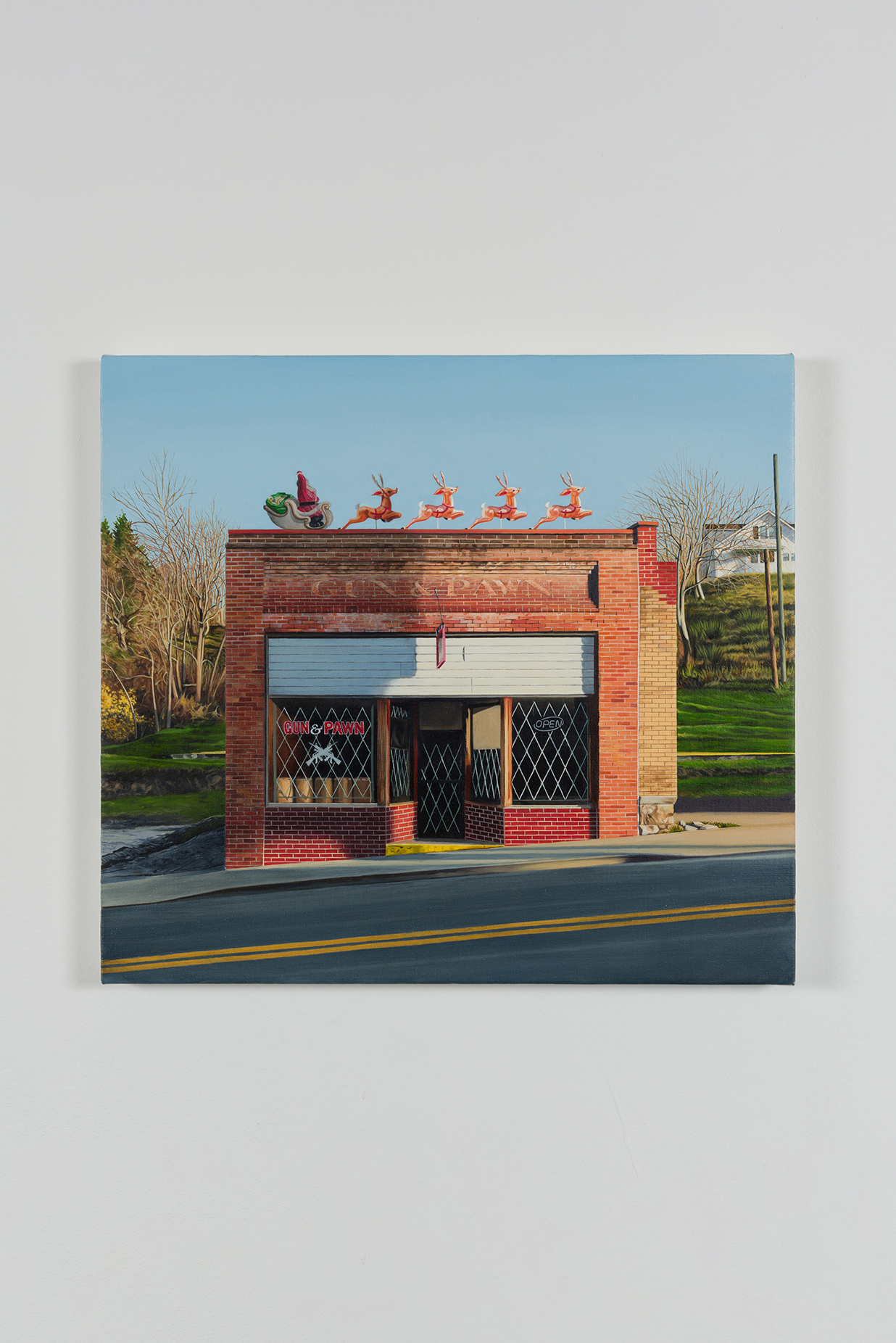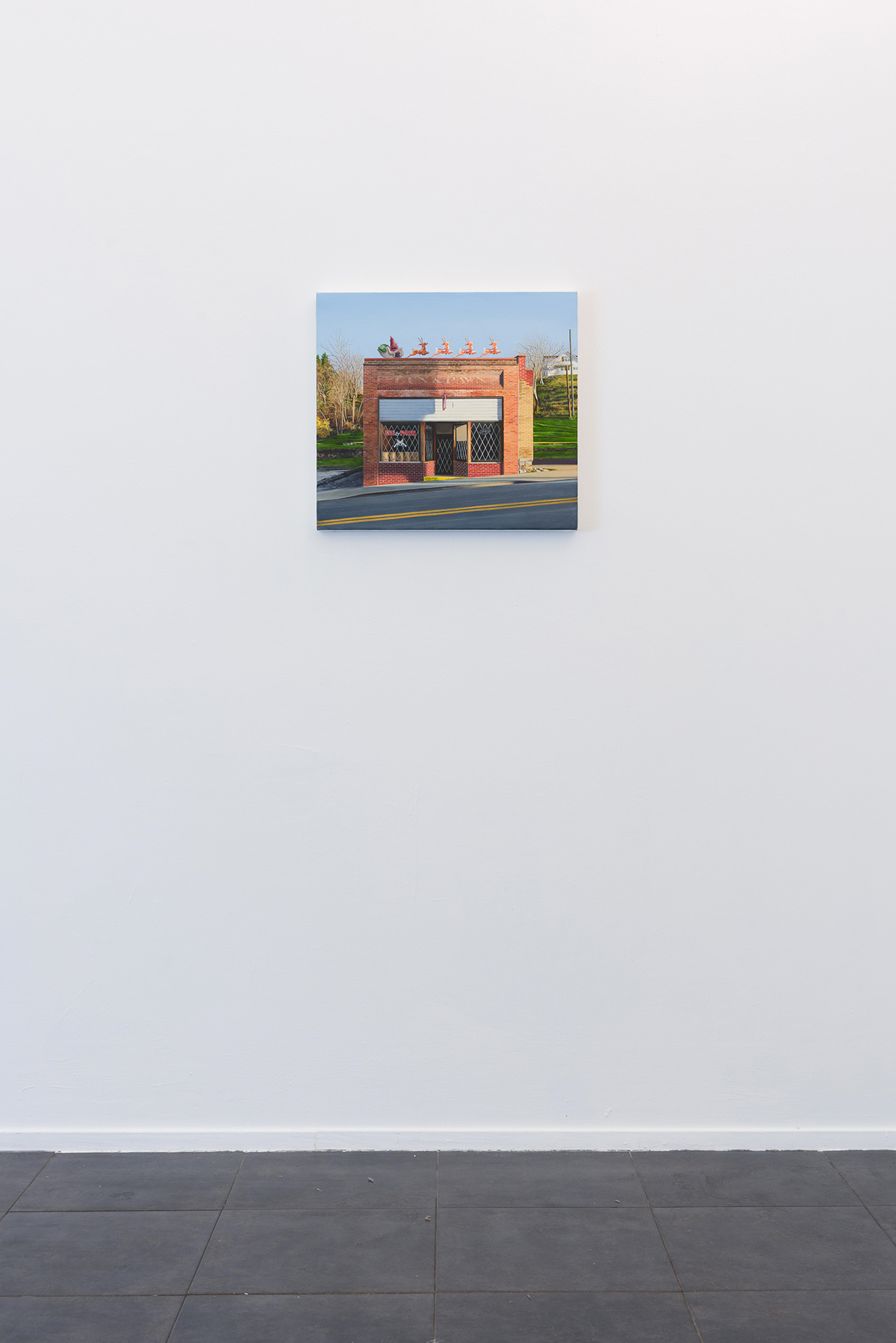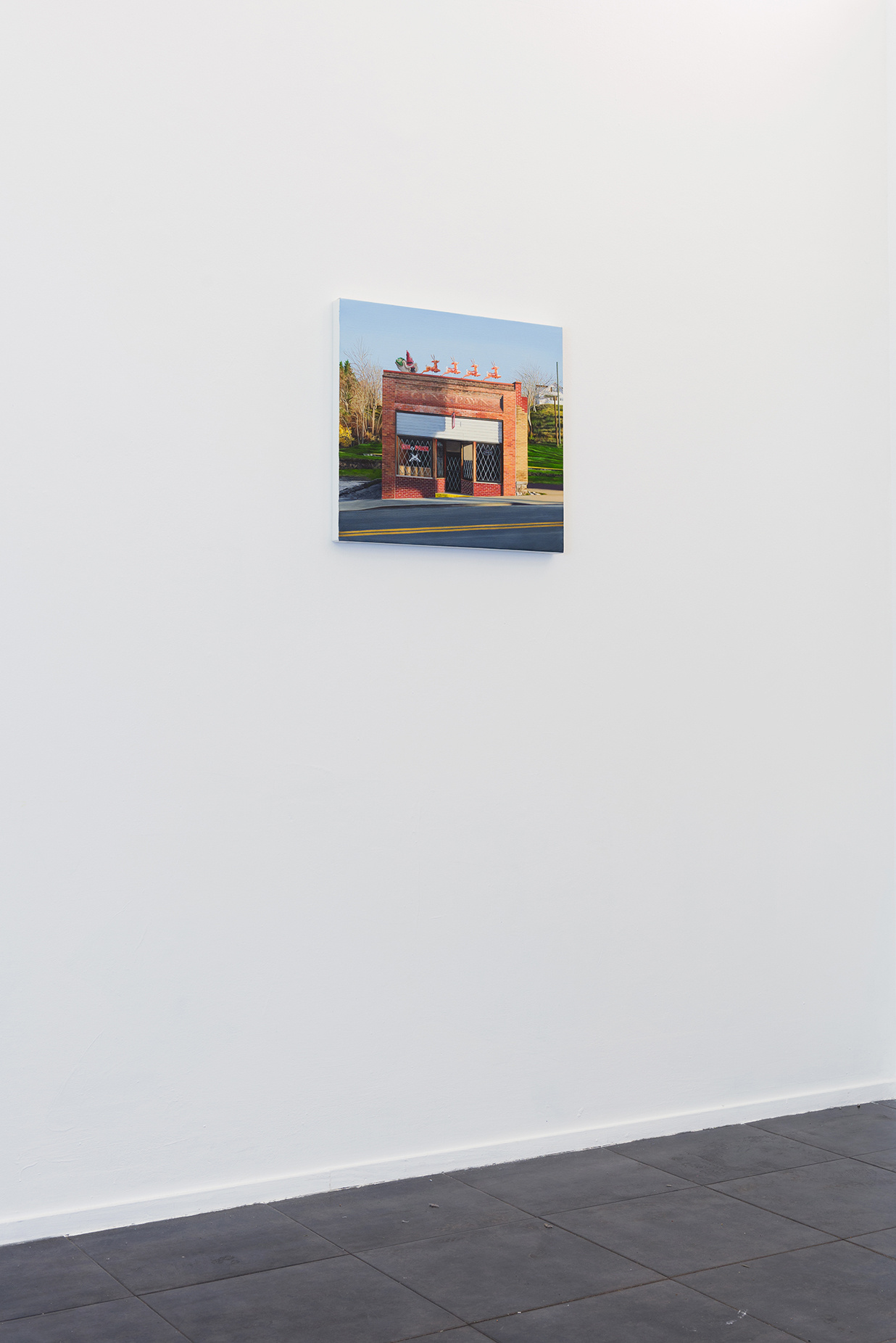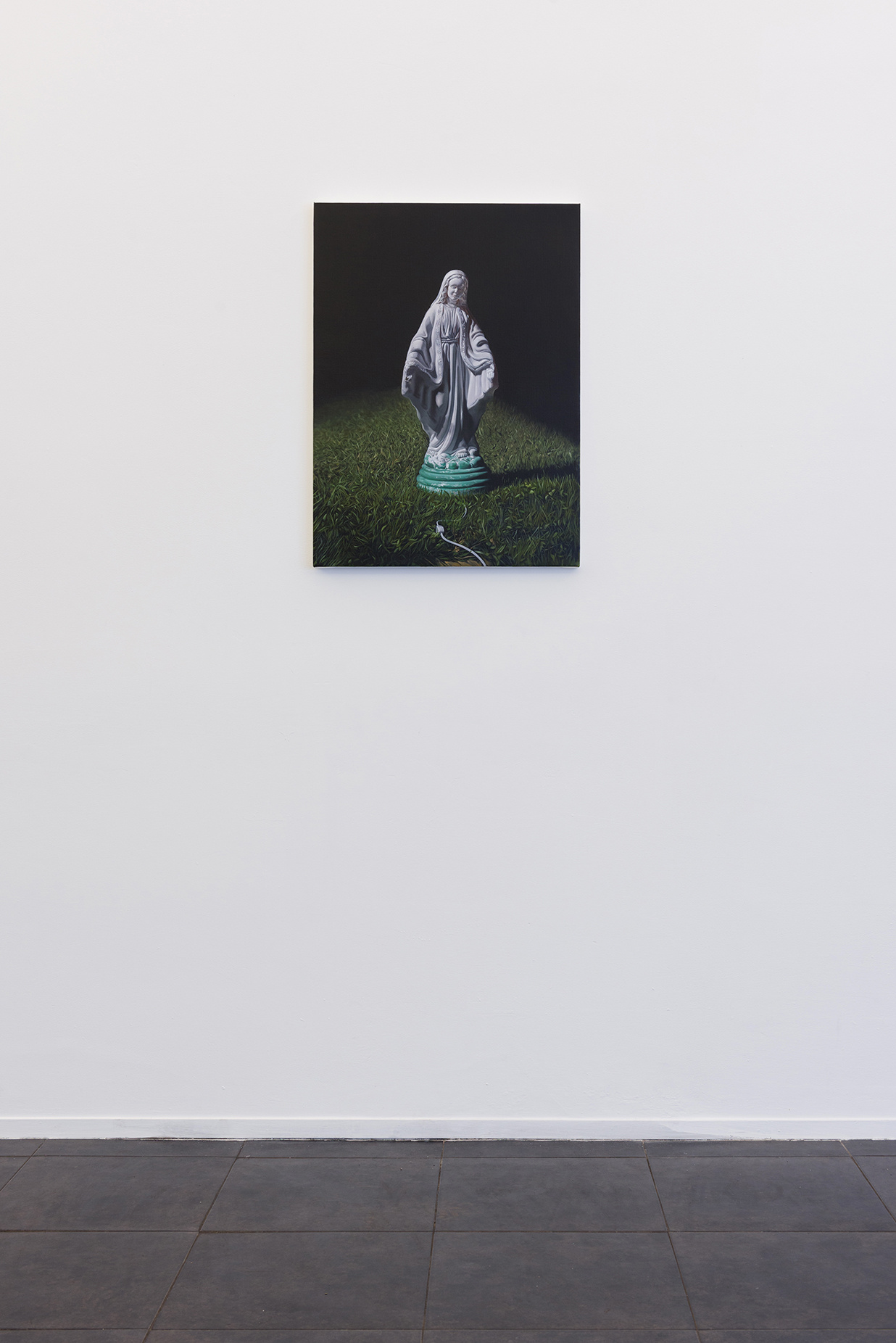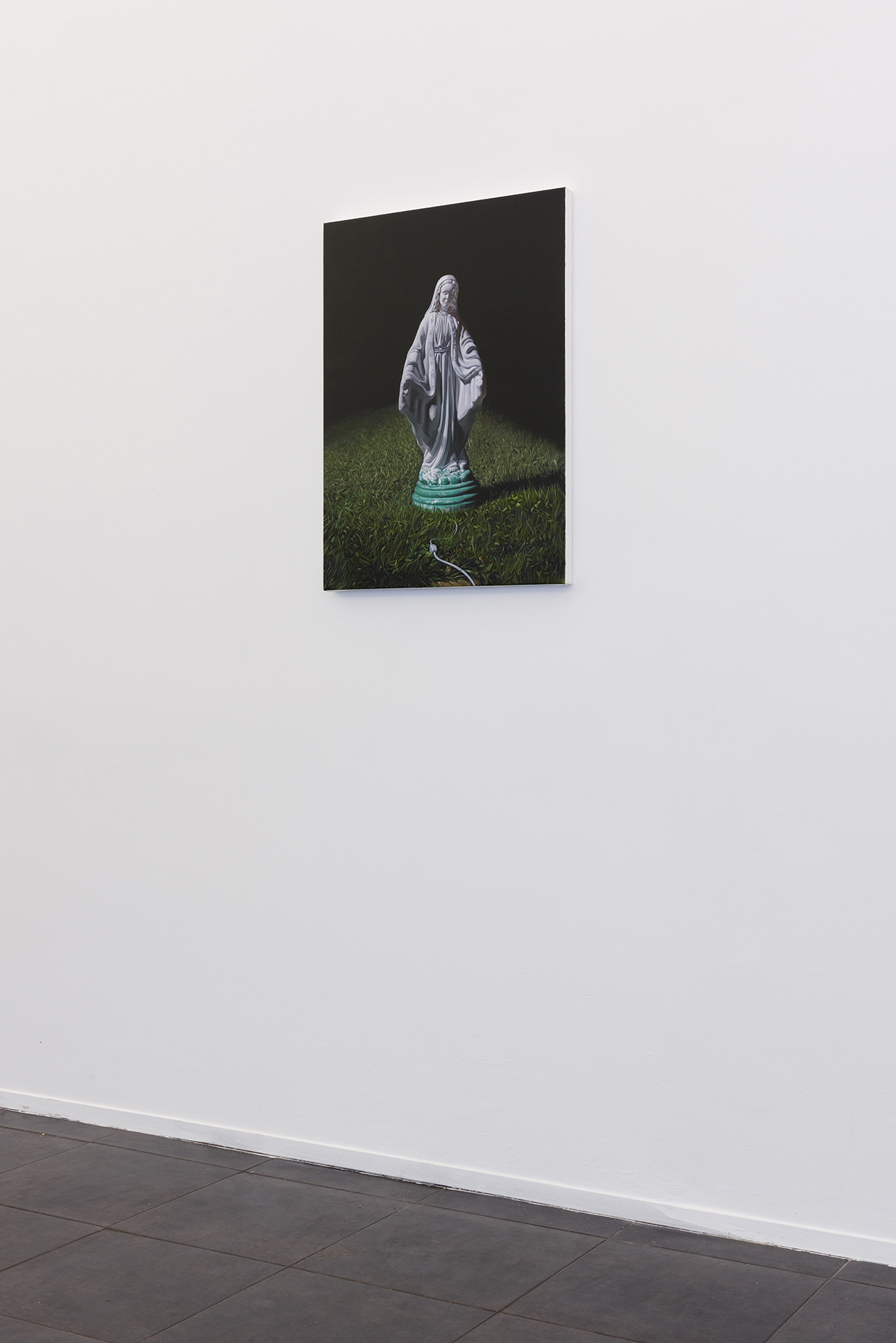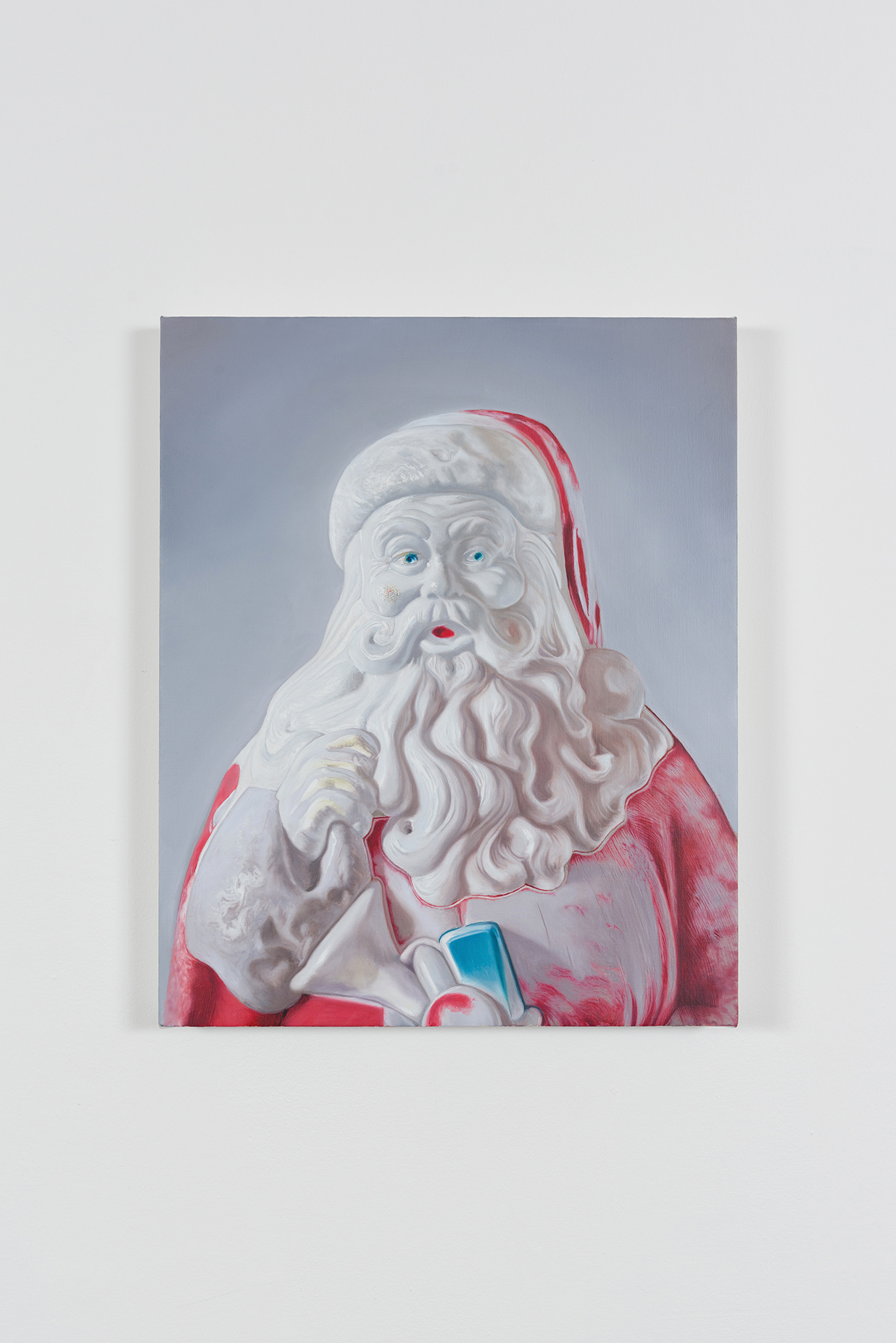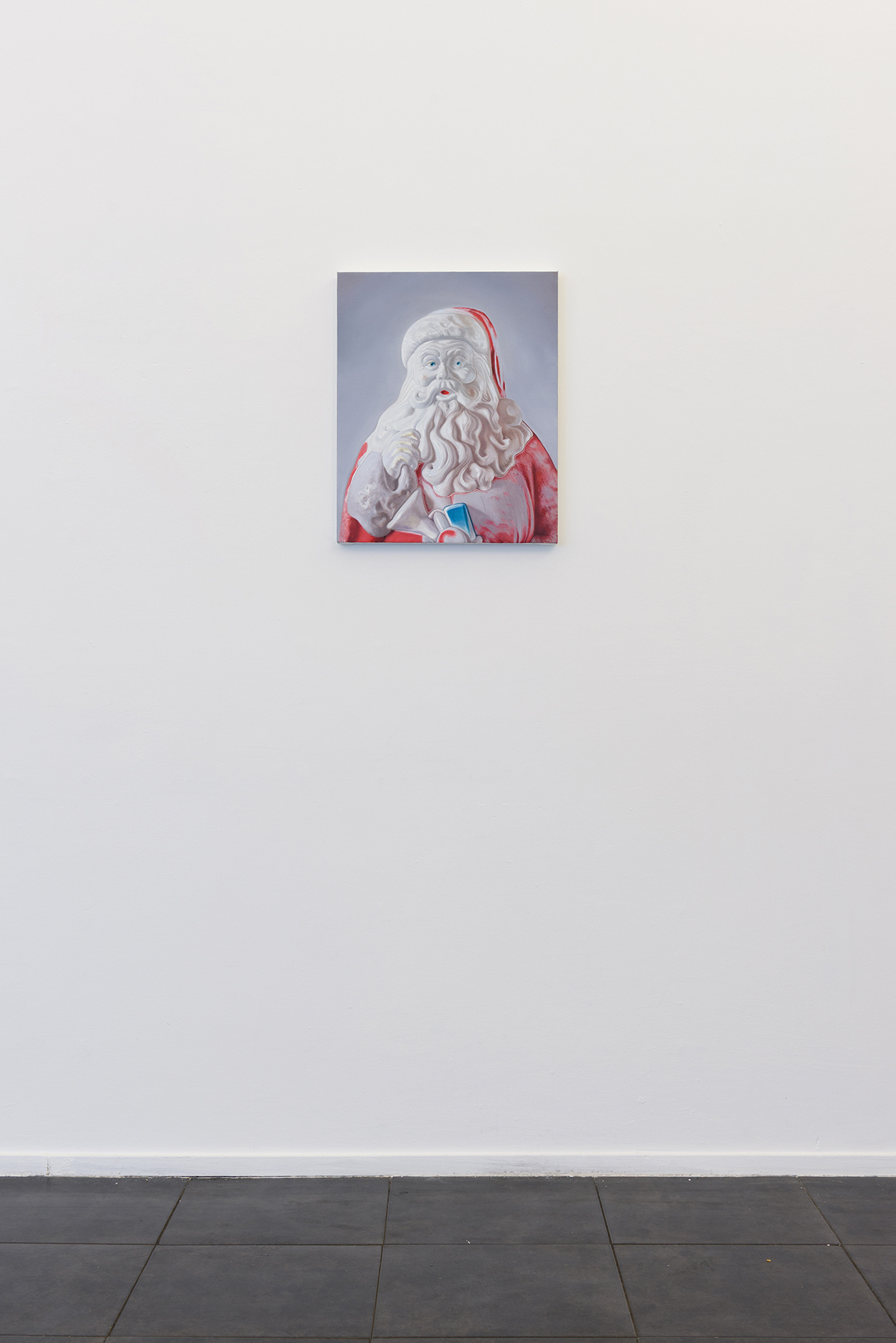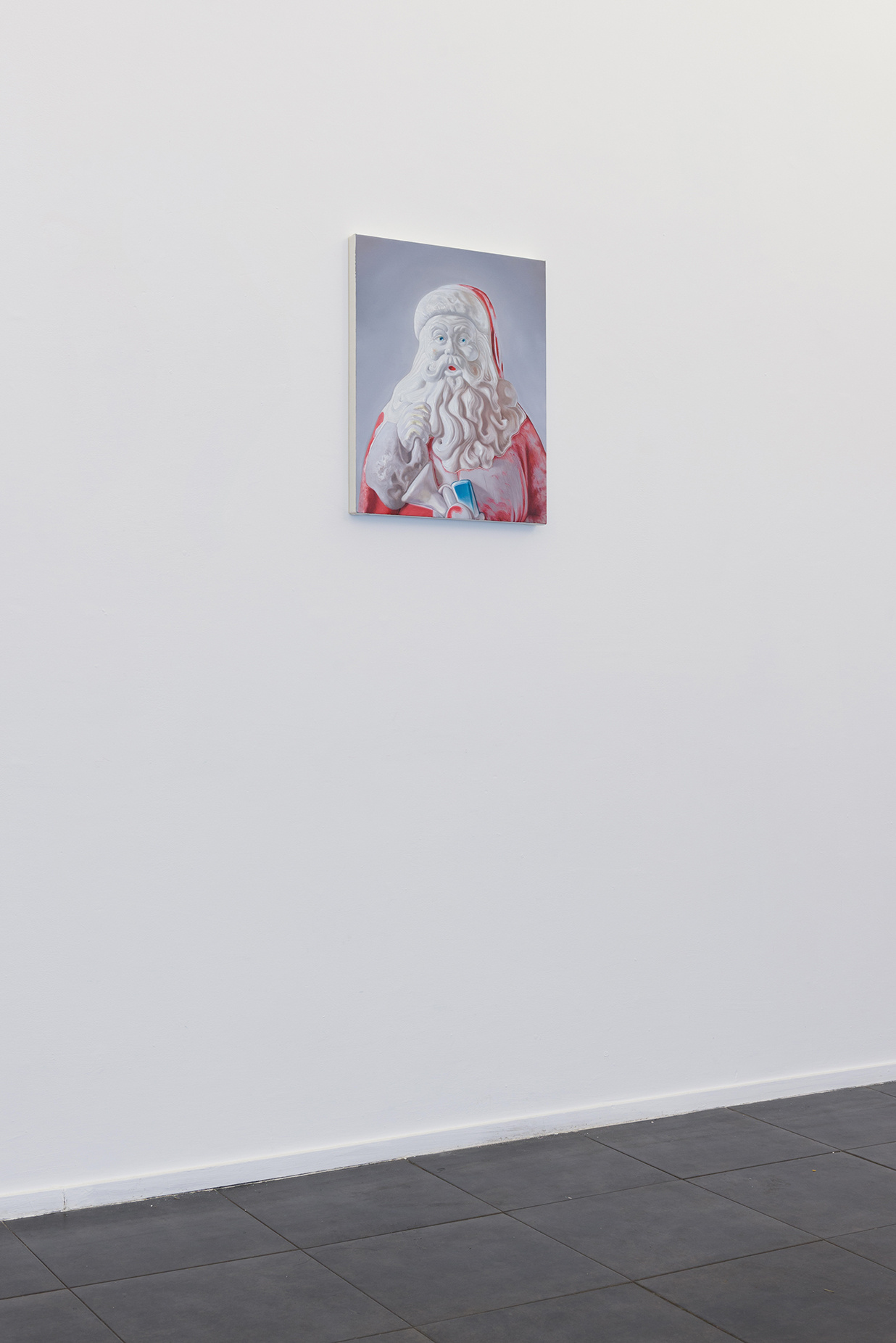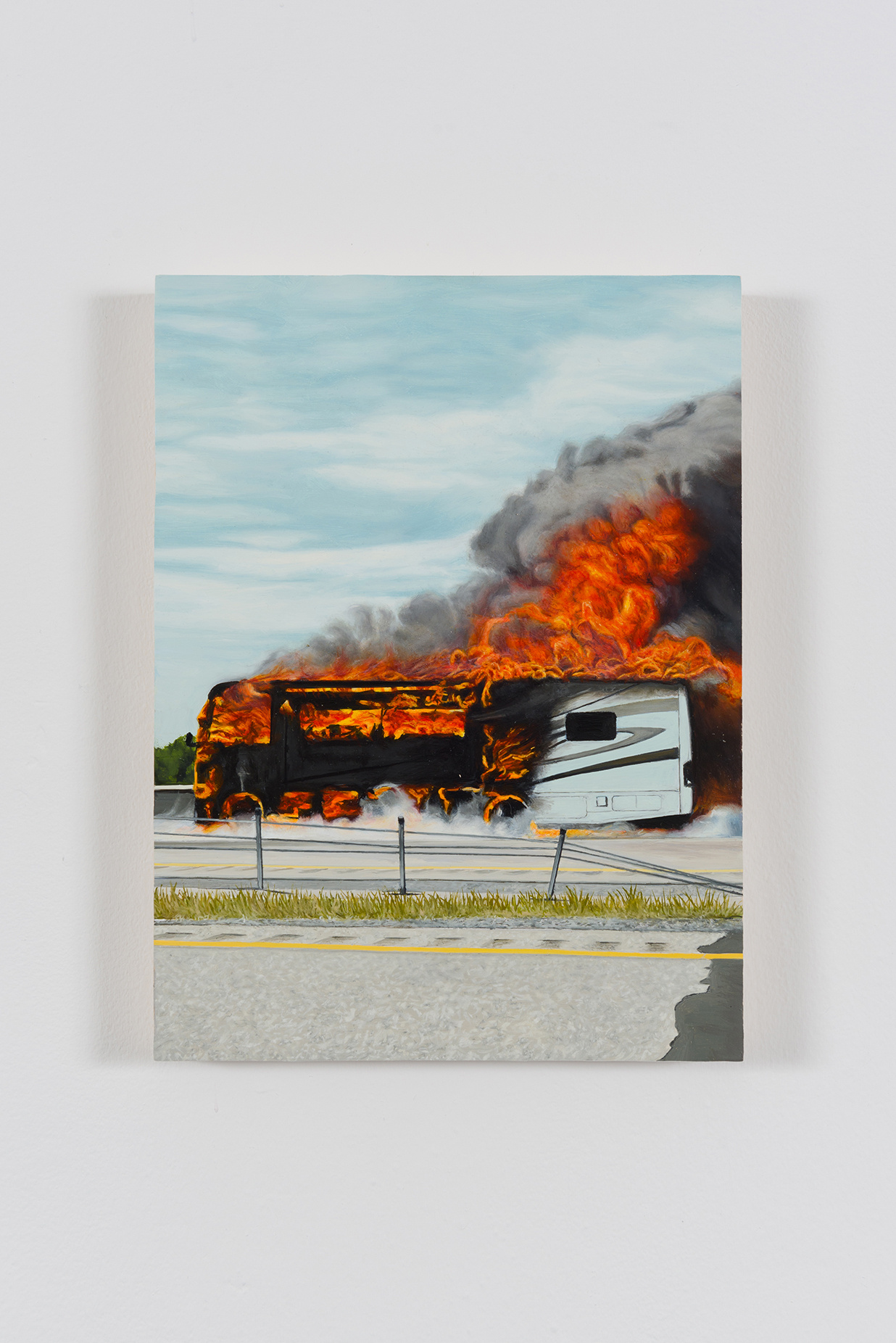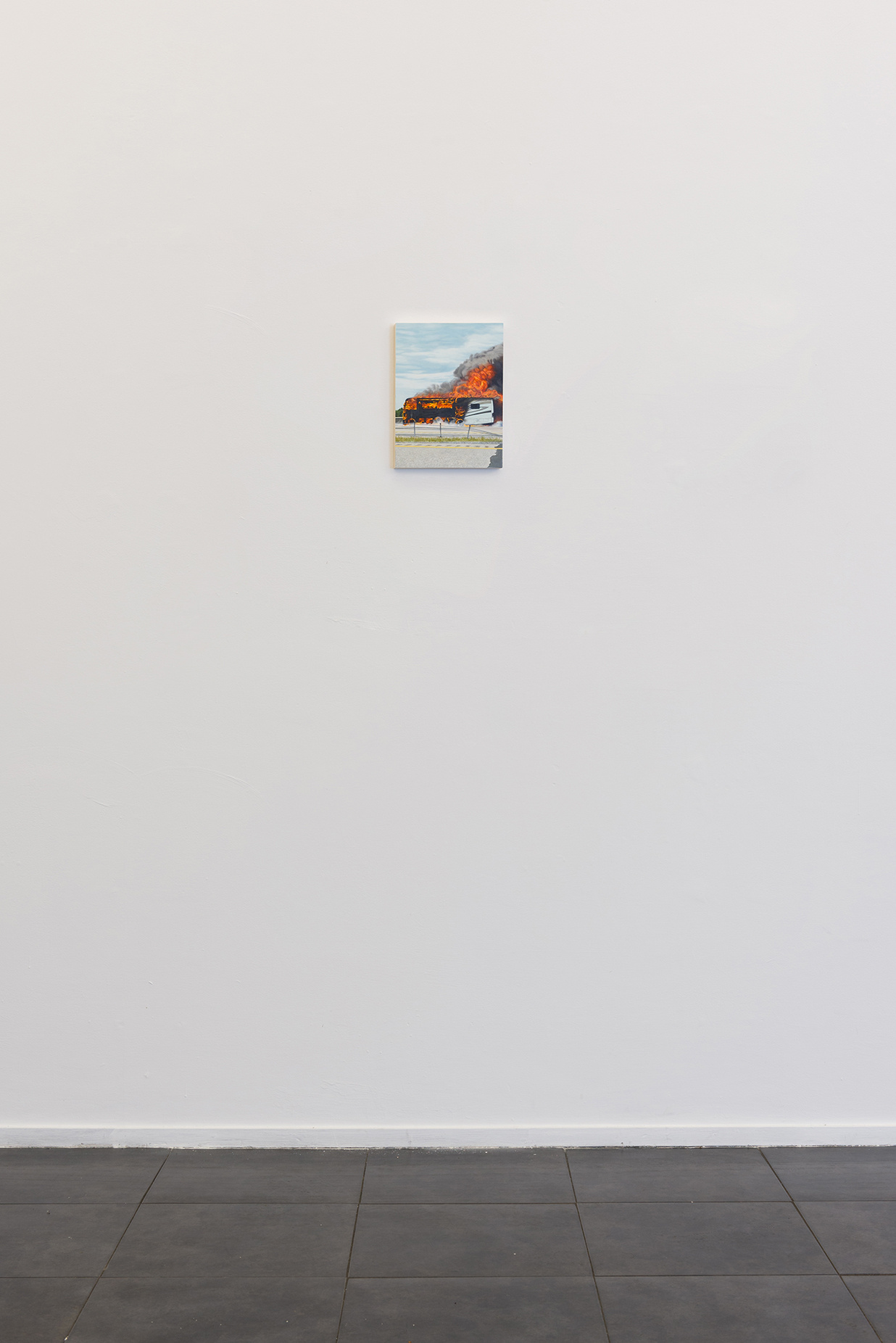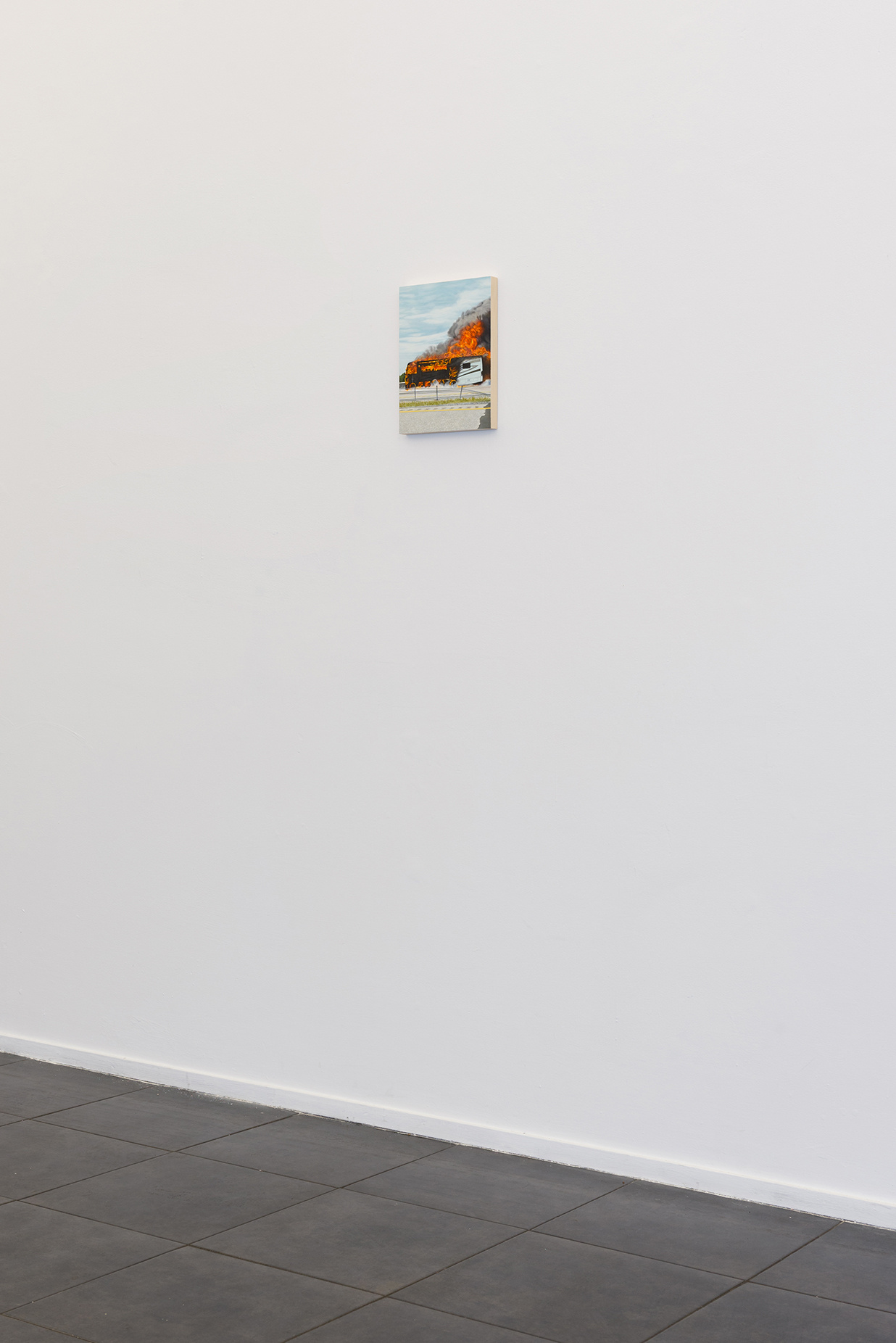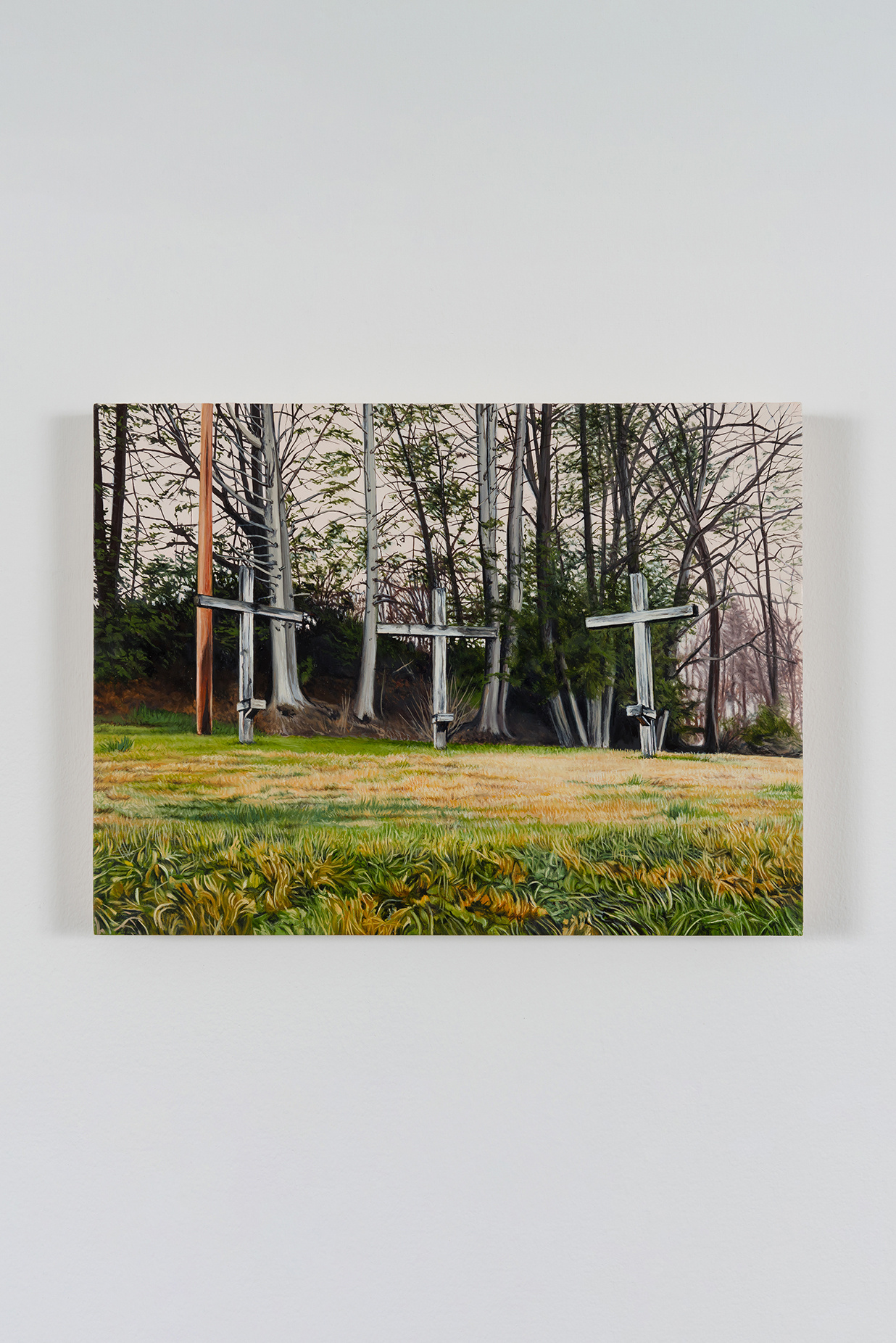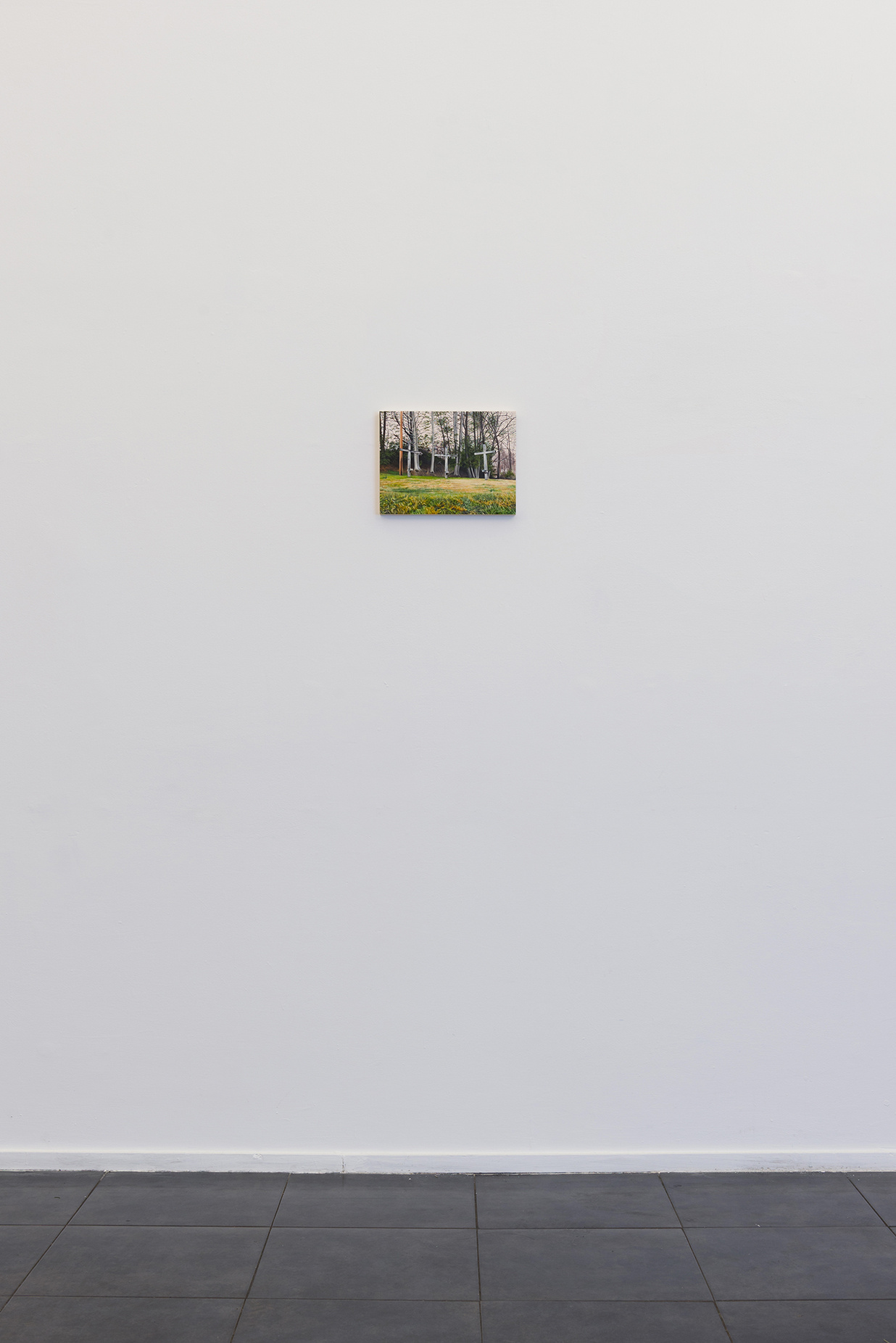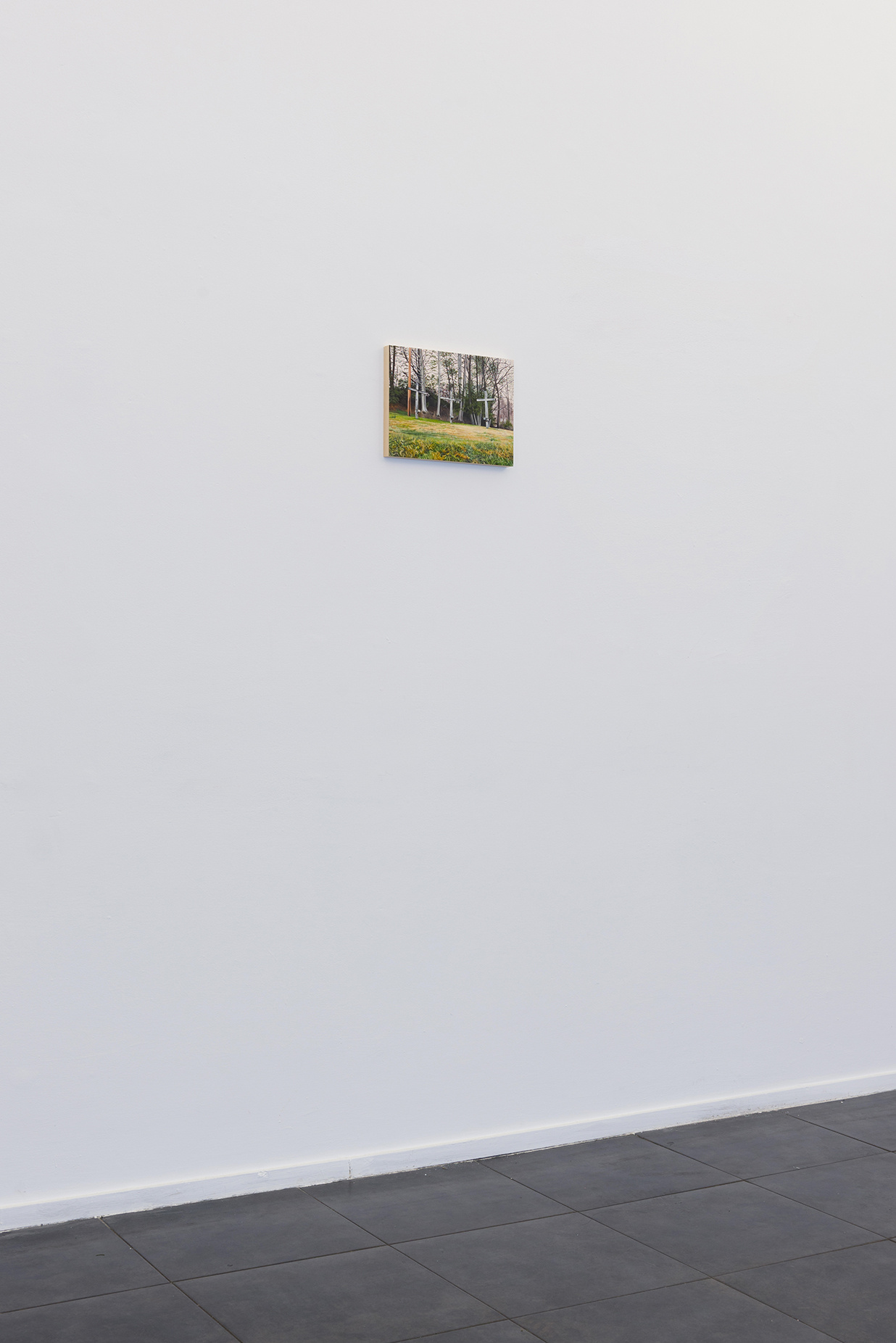In this latest body of work, Lindsay Merrill renders a number of seemingly divergent subjects – car fires, crucifixes, gun shops and Christmas lawn ornaments – to create a portrait of rural America that is at once bucolic and full of angst, torpor and contradiction.
The paintings present scenes from the artist’s home in rural West Virginia and recall the work of American Precisionist painter George Ault (1891 - 1948), both in their exacting, detached style and in their austere portrayal of pastoral America. In Crosses, three gray crosses stand erect beside a phone pole on an otherwise unremarkable hill. In Fire, an enormous RV burns on the side of a highway, its blackened body sending plumes of noxious smoke into a blue sky. In We Buy Guns, Merrill depicts a gun shop in her neighborhood. Once itself a home, the converted building is covered in an array of plastic American flags and vinyl signs, the latter of which showcase its wares so enthusiastically that the potential for violence seems more like a promise.
Amidst these scenes, Merrill has interspersed depictions of Christmas lawn ornaments. These objects, which were popularized in the United States during the mid-20th century, translate old world religious symbols into 20th century American materials – molded plastic – and iconography that converts saints and martyrs into smiling, three-dimensional cartoons. Their friendly shapes, which often betray the violence of their origin stories, appease American tastes, and their scale and materials point to broader American economic aspirations for a particularly suburban lifestyle. In the world Merrill has crafted, the figures become quiet witnesses to the changing realities of American life even as they seem to forecast impending collapse. This tension is best exemplified in the show’s namesake, Moving Targets, in which an elaborate rooftop scene of Santa Claus in his sleigh sits atop a shuttered gun shop in golden afternoon light.
The blow mold figures featured throughout the work are conspicuously devoid of their characteristic glow, except for one figure in the aptly titled Shine. Here, Merrill reimagines Henri Rousseau’s La Guerre (1984), transforming his female protagonist into a plastic reindeer galloping across a meadow and a fiery horizon. The bright, leaping figure has an agency and self-possession that is absent from the figures populating Merrill’s other scenes, yet does little in the way of offering any concrete solution to the encroaching flames.
While all the figures in Moving Targets can be interpreted as quiet observers to the changing realities of American life, the suite of paintings more broadly engages with the notion of impermanence. In doing so, the images are not just conceptions of the artist’s mind, but are instead a legible face of a morphing American culture and landscape. The sharpness of Merrill’s brush and sobriety of her gaze invites us to peer closely into her scenes as if we might find respite in some hidden, illuminating detail. The artist, however, denies us this frivolousness. Instead, Merrill’s paintings confront us with the things and places we think we already know – main street shops, roadside memorials, and decorative holiday cheer – and she invites us to see them in all their strangeness, mystery and foreboding. (VVB)
Read less
In this latest body of work, Lindsay Merrill renders a number of seemingly divergent subjects – car fires, crucifixes, gun shops and Christmas lawn ornaments – to create a portrait of rural America that is at once bucolic and full of angst, torpor and contradiction.
The paintings present scenes from the artist’s home in rural West Virginia and recall the work of American Precisionist painter George Ault (1891 - 1948), both in their exacting, detached style and in their austere portrayal of pastoral America. In Crosses, three gray crosses stand erect beside a phone pole on an otherwise unremarkable hill. In Fire, an enormous RV burns on the side of a highway, its blackened body sending plumes of noxious smoke into a blue sky. In We Buy Guns, Merrill depicts a gun shop in her neighborhood. Once...
Read more
